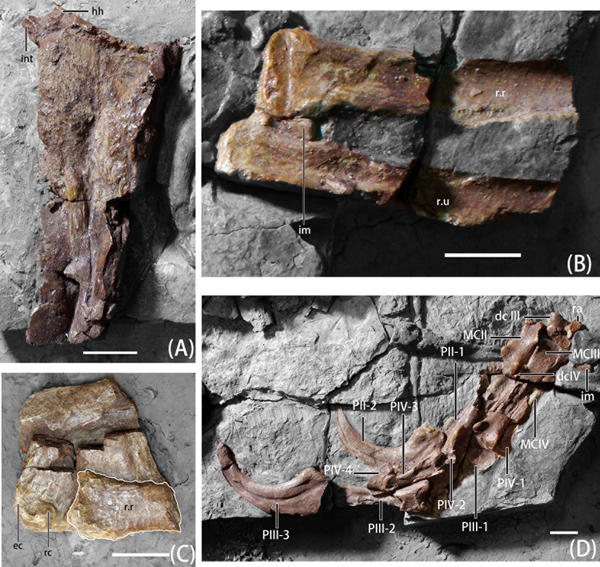Fans of the now retired Carnegie Collection series of prehistoric animal models, might remember a model of the therizinosaur Beipiaosaurus (B. inexpectus). The model, introduced in 2006 and withdrawn in 2014, might have given dinosaur fans the wrong impression when it comes to this Chinese theropod. Not that the replica made by Safari Ltd was highly inaccurate, but when the model was produced, only the skull of Beipiaosaurus had actually been studied in detail.
Now, some twenty-two years after this small therizinosaur was named, scientists including Xing Xu who was one of the authors of the paper describing the skull, have revisited the fossil material and completed their analysis by focusing on the postcranial fossils.

Beipiaosaurus inexpectus
Named and described in 1999, from fossils found by a local farmer three years earlier, Beipiaosaurus heralds from the Lower Cretaceous Yixian Formation (Sihetun locality, near Beipiao), Liaoning Province, China. Described as a basal therizinosaur, it is thought to represent a key taxon in helping scientists to understand the evolution of the Therizinosauridae. Scientists writing in the on-line, open access journal PLOS One, provide an extensive description of the postcranial fossil material associated with the holotype specimen (IVPP V 11559). After Beipiaosaurus had been named, more bones associated with the holotype were found at the original fossil site and these fossils have helped palaeontologists to identity further unique, anatomical characteristics.

Additional Autapomorphies
Analysis of the hip socket (acetabulum) length provided a new autapomorphy helping to distinguish Beipiaosaurus from other therizinosaurs.
The shape of the ilium, specifically the pubic peduncle (marked as I.P.P in picture C, above), provides a second unique characteristic for this genus identified in this study.
The manual ungual (finger claw bone) in digit III is the longest one in B. inexpectus. In other therizinosaurs, it is the manual ungual of digit II that is the longest. This is the third additional autapomorphy identified in this research paper.

The authors of the scientific paper, provide a detailed description of the skeleton of Beipiaosaurus, including fossil bone associated with the holotype that have not been reported upon before. Their study has revised the diagnostic features associated with this dinosaur. For example, the researchers examined two dorsal vertebrae that had previously not been studied.

The new study into this feathered dinosaur that was named and described more than twenty years ago has helped palaeontologists to better understand the postcranial skeleton of Beipiaosaurus, helps distinguish it from other therizinosaurians and provides insights into therizinosaur evolution.
Furthermore, the researchers, who include Shiying Wang and Chun-Chi Liao (Chinese Academy of Sciences) and Lindsay Zanno (North Carolina Museum of Natural Sciences) as well as Xing Xu, identified several new synapomorphies helping to clarify the evolutionary history of the Therizinosauridae family. A synapomorphy is a characteristic present in an ancestral species and shared exclusively (in a more or less modified form) by its evolutionary descendants.
The scientific paper: “Postcranial osteology of Beipiaosaurus inexpectus (Theropoda: Therizinosauria” by Chun-Chi Liao, Lindsay E. Zanno, Shiying Wang and Xing Xu published in PLOS One.
Everything Dinosaur’s award-winning website: Dinosaur Models.






Leave A Comment